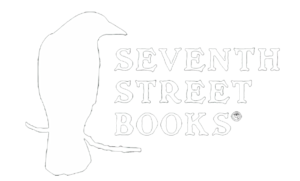Did you know that in 2016, freelancers made up roughly 25 to 30 percent of the U.S. workforce? And did you know that number is expected to reach 40 percent by 2020?! Considering basically everybody and their mom is going to be freelancing before this decade is out, I figured I would write a super-duper helpful guide on what is surely one of the hardest parts about starting out as a freelancer (other than remembering to shower)…
That’s right, I’m talking about taxes!
Do you know what a 1099 is? Have you set up an LLC? If either of those questions have you stumped, then this guide is for you.
1. How to set up finances for freelancers
You may think the hardest part about freelance work is actually getting clients (and you may be right), but managing clients has its own set of challenges. Before you start work for any client, it’s crucial to agree upon terms. You need to clearly define the scope of work as well as how billing and payment will be handled. This can vary from client to client, but should be explicit. Will you invoice them monthly or weekly? Will they send a check or pay via PayPal? How long do they have to pay you?
Once you know how and when you’re getting paid, create a tracking system for all your business income and expenses. You can pay for a tool like QuickBooks, but a DIY spreadsheet works just fine.
TIP: Avoid PayPal fees by asking for Venmo, a check, or direct deposit.
Come tax time, you’ll be glad you kept records along the way—and having a clear system helps keep your head straight when you’re juggling multiple clients and payments each month. Remember to keep track of any expenditures for your business such as office supplies, software, and especially big ticket depreciable items such as computers, printers, and furniture. You’ll need those numbers later, and it’s much easier to keep track as you go than to try to remember what you spent on pencils back in June.
Sole Proprietorship vs LLC (Limited Liability Company) vs S-Corp
Now that you have your clients and you’ve agreed upon the terms, you were probably asked to fill out a W-9. If you filled out a W-9, you had to check a box stating whether you are an individual/sole proprietor, single-member LLC, or corporation. In case you had no idea which of those boxes to check, let’s review each one.
The benefits of acting as a sole proprietor are that it’s easy (you already are one!) and free. The downside is that since you and your business are the same entity, you are personally responsible for any liabilities your business may face, and you can end up paying more than you need to in taxes.
The main advantages of setting yourself up under an LLC are that you avoid paying both personal and business taxes on your income, and that it protects you from those potential liabilities. Let’s say one of your client relationships goes south and the client decides to sue you. If you are a sole proprietor, your personal assets can be used in settling any debts and claims against your company. If you are set up as an LLC, however, only the assets of your business can be taken. While you hope this never happens, you don’t want to lose your shirt if it does.
TIP: When setting up an LLC, make sure to keep your company assets in a separate bank account, preferably under your company name.
If your business is making way more money than you need to live (congrats!), then probably the best (though more complicated) option is to set yourself up as a corporation, or S-Corp. Let’s say you make $100,000 after business expenses—you can pay yourself a salary of $40k as an employee of your own business, and the other $60k will be considered profit for your business. This $60k will not be subjected to 15.3% payroll taxes and can later be taken out as a distribution. Distributions are still subject to local and state income tax, but saving that federal self-employment tax can make a HUGE difference.
So why not just pay myself $1,000 and take $99,000 as a distribution? Well, because the IRS isn’t stupid. They realized people were trying to maximize distributions and created laws that require you to pay yourself “reasonable compensation.” How do you determine what’s reasonable? Excellent question, and here is a good article on salary and distribution ratio to help you understand where you need to be.
While you may be thinking, “why doesn’t everyone just file as an S-Corp?”…there are downsides as well. It costs money to incorporate your business, and you may owe additional local and state business taxes. In addition, as an S-Corp, you cannot file your business taxes along with your personal return. This means if your freelance business is a one-pony show, you will be doing your taxes twice, and may not see any significant difference. This is why I recommend this option only once you’re making a whole bunch of money.
BE AWARE: If you are set up as an S-Corp, you MUST pay yourself a reasonable salary according to the definition of the IRS. If you are going this route, hiring an actual accountant to avoid audit potential isn’t a bad idea.
W-2 vs 1099
Filling out a W-9 means you will receive a 1099 form each January stating how much you were paid over the past year (if you earned over $600 from that client). A 1099 is how business entities file payments to independent contractors who are not considered employees of the business (as opposed to a W-2 for employees). Multiple clients mean you will receive multiple 1099s.
| If you filled out a: | You will receive a: |
| W-9 (you are a contractor) | 1099 (no taxes are withheld) |
| W-4 (you are an employee) | W-2 (taxes are withheld) |
The most important distinction between the two is how they affect your taxes. Which leads us to…
2. Understanding freelance taxes
If you are used to getting a W-2 at the end of the year with your taxes already paid, 1099s and freelance taxes can seem overwhelming. Here are the first few things you need to remember:
- If you filled out a W-9, no taxes have been withheld against your income and YOU are responsible for calculating and making estimated tax payments throughout the year.
- You only need to file a self-employed tax return if you made more than $400 from your business.
- Your self-employed income is the payments you receive net of any business expenses you incur.
If you make $3000 freelancing, but spend $2700 on office supplies, then you net only $300. And also, you need to stop buying office supplies. In this case, you would not need to file a Schedule C. Wait, what’s a Schedule C?
Filing a self-employed tax return
Self-employed income is reported on your taxes via a Schedule C in addition to your 1040. This is true for both sole proprietors and single-member LLCs. Again, S-Corps must file separate business returns.
If you are a full-time freelancer working from home, remember that a lot of your expenses may be deductible, such as part of your internet bill or even part of your rent! There are very specific rules for what you can deduct as home office expenses, so check out the IRS guidelines for deducting business expenses. Since 2014, the IRS has simplified home office deductions so you can now opt to take a standard deduction (up to $1500) in lieu of collecting all your receipts from the year. This standard deduction also minimizes audit risk…hooray!
Since most people with normal jobs have taxes withheld from each paycheck, they pay their taxes all year long. With freelance taxes, the government expects you to do the same.
And that brings us to step #3:
3. Paying freelance taxes
Self-employed persons are expected to make payments on their estimated tax liability four times a year. These estimated tax payments are calculated on your projected annual income, then divided quarterly. If your income is skewed to a certain time of year (maybe you do most of your work over the holidays), you can opt to manually calculate your payment each quarter.
If you have a day job and freelancing is just a small side hustle, you may not have to make estimated tax payments at all, but you will still have to pay taxes on that extra income come year-end.
If you think you will earn $50,000 freelancing and pay your estimated taxes accordingly—but then only end up earning $40,000—you can expect a refund at the end of the year just like anyone else who overpaid. Hooray! But if you end up making more than you thought without adjusting your payments, you could be in for a nasty surprise.
For many freelancers, monthly income can be highly volatile making it impossible to predict future earnings. In this case, simply set aside around 25-30 percent of any freelance income to pay those taxes when they’re due. If you wait until the end of the quarter (or worse, the end of the year) you could get hit with a HUGE tax bill and may not have enough money to pay it.
TIP: Open a separate bank account to set aside savings for taxes from each payment you receive.
While it may seem daunting at first, there are plenty of tools out there to help with everything from client organization to submitting tax payments. I used to use H&R Block, but I’ve moved away from them as their fees kept getting higher and higher and they want you to upgrade to unnecessary services at every turn. BOO! I now use TurboTax Self-Employed which also seamlessly integrates with my Quickbooks Intuit Self-Employed (which handles all my business accounting). It’s super easy and saves me from manually entering my business expenses for the whole year! It’s intuitive (hence the name), easy to use, and walks you through every step of the way. As a bonus, they’ve added a feature that automatically imports statements from any investment accounts you have. Figuring out how to add these is one of my least favorite part of doing taxes, so this is an awesome improvement!
While it isn’t free, it’s way cheaper than hiring an accountant, and they will guide you through the entire process and provide audit protection as well. It took me just a few hours to get everything done, and I don’t have to panic over whether or not I messed something up.
Side Note: I recommend using the online version rather than downloading the software. The two do NOT speak to each other so if your computer dies and you lose the software or the file, it’s a hassle to get it sorted. With online filing you know your previous returns will be kept safely on their server and not at the mercy of that beer you just spilled all over your laptop.
“But Taylor, what if I live overseas for part of the year??? What if some of my income comes from other countries? What if all of it does? What do I do then?”
Excellent question! Unfortunately, freelance finance for travelers and expats deserves an entire post of its own as navigating overseas income can be quite treacherous. (Apologies for the pirate metaphor there) Fortunately for you, I will be writing one soon!
Got any questions? Ask away and I will answer them to the best of my ability!










